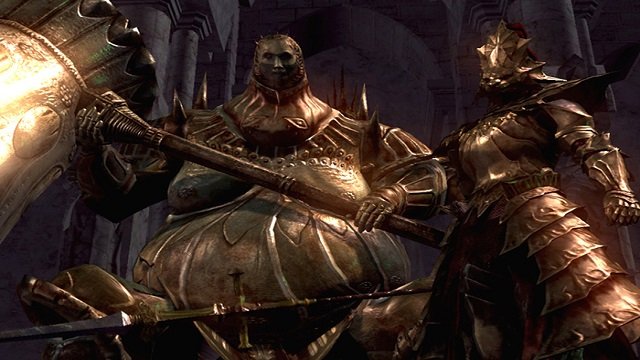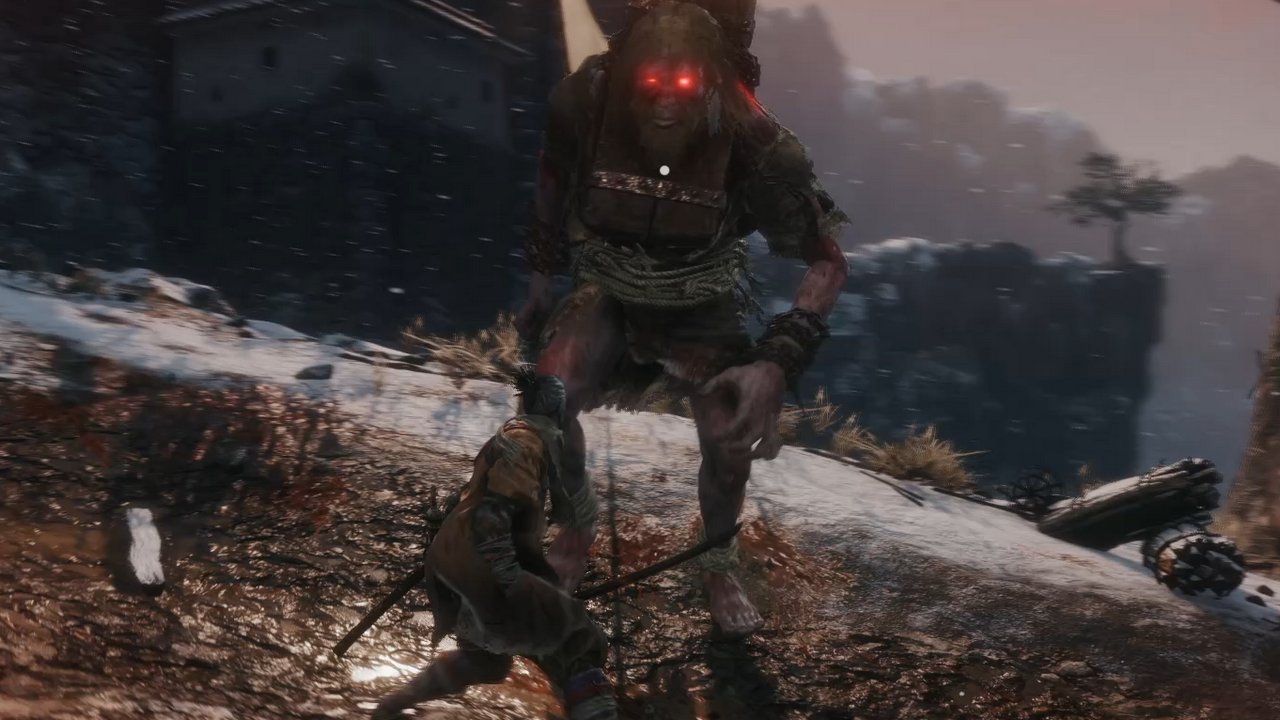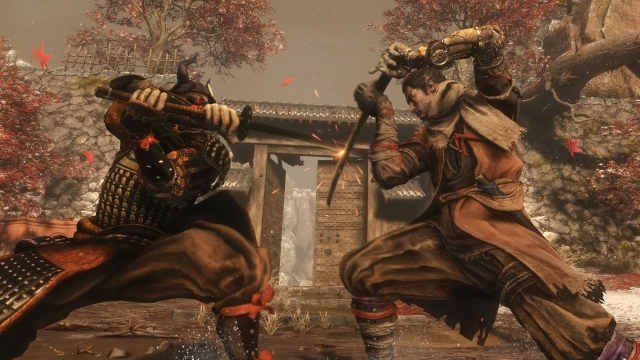If you, like me, found a “safe” way to navigate around the world or Lordran in Dark Souls, then it was probably with a large shield held up to your chin, slowly moving through each room with a great deal of hesitation, ensuring each and every corner was clear before moving on. It’s a lot like how the military clears a room, only with panicking instead of calculated execution when breaching. Sekiro: Shadows Die Twice has removed that shield from your chin and given you a bunch of other options, but all of those options mean you won’t be memorizing these level layouts the same way you did in Dark Souls, mainly because of the grapple hook.
Sekiro‘s one-armed Wolf is a Shinobi, a trained ninja, skilled in combat and stealth, and almost all of the areas take his skills into consideration from the beginning. You can go in, draw your sword, and prepare to fight against legions of enemies out in the open, or you sneak through tall grass, assassinate unwitting opponents, and disappear back into the shadows as soon as you’re spotted. These tactics, along with the new grapple hook, completely change how you’ll be interacting with each area.
If you’re playing Dark Souls and you were asked to head to New Londo from Darkroot Garden, you would reasonably be able to figure out a route in your head: a quick path past Andre the Blacksmith, through the Cathedral in the Undead Burg, shooting past Firelink Shrine before heading down the long elevator. Dark Souls‘ level design is intricate and incredibly memorable, because before the end of the game, you’ll have moved through it so many times. The reason the first time through has a shield held up to your chin is that you know that it is dangerous going into a new area as you’re unaware of where the path bends and where enemies lurk. It’s only with knowledge of the world and enemies within do you feel somewhat safe moving through.
New wolf

Sekiro is very different in this regard. Getting ambushed by unruly enemies is certainly a concern, but with the new stealth mechanics, you can quite easily sneak up to them, or tiptoe past them entirely. But a bigger change is most certainly the grapple hook.
It’s not all bad though and is, in fact, amazing in practice. Sekiro‘s limited health feels like a restriction compared to Dark Souls, but Wolf’s ability to nimbly escape and grapple hook away to safety completely changes the pace of the game. Retreating so enemies lose your trail before sneaking up for some cheeky stealth assassinations is a completely new mechanic for the games From Software is known for. And the options it opens up feel wonderful in execution.
The verticality of stages and the way you can quickly move through stages you’re used to all feels so freeing when players are used to feeling so grounded in other Soulsborne games. It’s so grounded in fact, that you’ll be aware of every room in every area on your playthrough of a Souls game, or Bloodborne. Something that, thus far, hasn’t happened in Sekiro: Shadows Die Twice.
In Dark Souls, it’s so important to memorize and explore each part of a stage. You might miss an important item, or a switch, or an elevator which reveals a shortcut. If you’re not observant and vigilant when it comes to your surroundings, you’ll skip past elements that can entirely change your fate from hopeless to promising. That’s what ingrains these games into your brain: you memorize each enemy location, important object, shortcut, and enemy attack pattern. It is all essential, given your limited options.
Memories die twice

But with Sekiro, you have so many options at your disposal, that the small details can be more easily skipped past. You no longer have to look and memorize each stage from ground level. Instead, you can quickly skip to a high ledge, finish off straggling enemies, and sneak around to finish the last few in some parry-heavy smile-inducing combat. And then you move on.
You no longer need to study each area as intensely before moving forward in hopes of making it easier the next time through. Because in Sekiro, your first time through an area very well may be your last time, and those places you’ll be trudging through multiple times are so easily skipped through thanks to the grapple hook and sneaking past enemies. From Software made some intelligent choices to make Sekiro distinct from its Souls cousins. But some of these changes have had some negative consequences.
Sekiro: Shadows Die Twice has great level design, where areas spiral around on themselves without you even noticing, but that’s the point. It’s so easy to skip through, that you might miss it entirely. The combat here is fluid, the level design is great, and bosses are intimidating and oppressive. But with these changes to the level design and its focus on zipping through, it’s easy to wonder if each stage in Sekiro: Shadows Die Twice will be as memorable as Dark Souls and its unforgettable, blood-soaked pathways.







